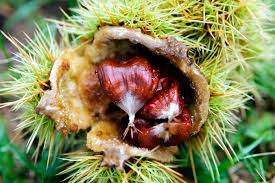Propagating chestnut trees (*Castanea spp.*) from seed is a gratifying venture that not only extends your orchard but also preserves cherished varieties. Though the process may seem intricate, with patience and the right techniques, you can successfully grow these magnificent trees from seeds. Here’s a comprehensive guide to help you through the process, from seed selection to seedling care.

Seed Selection
1. Choose Quality Seeds:
– Source: Select mature, healthy chestnuts from a reliable source. Fresh seeds have the highest likelihood of germination.
– Appearance: Opt for chestnuts with smooth, glossy shells. Avoid seeds that show signs of damage, mold, or decay.
– Variety: Consider the specific species or cultivar of chestnut tree you wish to propagate, as different varieties might have varying requirements.
Seed Preparation
1. Perform a Float Test:
– Place chestnuts in a bowl of water. Discard any seeds that float, as they are likely not viable.
2. Scarify the Seeds:
– To help seeds germinate, scarify them by lightly nicking the hard seed coat with a knife or rubbing with sandpaper. Exercise care to avoid damaging the seed inside.
3. Soak the Seeds:
– Soak the scarified seeds in water for 24 to 48 hours. This process softens the seed coat and promotes germination.
Planting
1. Choose a Planting Site:
– Select a well-draining site with full sun exposure. Chestnut trees thrive in fertile, loamy soil.
2. Prepare the Soil:
– Dig a hole approximately twice the diameter of the seed and plant it vertically, with the pointed end facing downward.
– Cover the seed with soil, planting it at a depth of 2 to 3 inches.
3. Spacing:
– Space seeds at least 20 feet apart to allow adequate room for growth and development.
Care and Maintenance
1. Watering:
– Keep the soil consistently moist but not waterlogged. Germination typically takes 4 to 6 weeks.
2. Mulching:
– Apply mulch around the seedlings to retain moisture, suppress weeds, and regulate soil temperature.
3. Pest Protection:
– Protect young chestnut trees from pests like rodents and deer. Install barriers or use repellents as necessary.
4. Growth Conditions:
– Ensure adequate airflow and sunlight to encourage healthy growth and prevent fungal diseases.
Transplanting
1. Timing:
– Transplant seedlings once they are large enough to handle and have developed a strong root system, usually in their second or third year.
2. Preparation:
– Prepare the new planting site by digging a hole that is slightly larger than the root ball of the seedling.
3. Transplanting Process:
– Carefully move the seedlings to their new location, ensuring minimal disturbance to the roots. Backfill the hole with soil and water thoroughly.
4. Post-Transplant Care:
– Continue to water and care for the newly transplanted trees, monitoring them closely as they establish themselves in their new environment.
By following these steps, you can successfully propagate and grow chestnut trees from seed, contributing to the beauty and biodiversity of your landscape. With attention to detail and care, your efforts will yield the rewards of majestic, long-lived trees that provide delicious nuts and ecological benefits.

